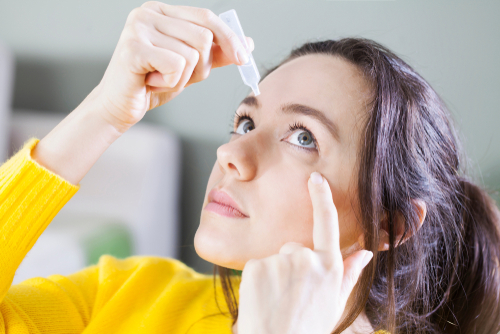When it comes to preparing compounded eye drop medications, what does a drug compounder need to be aware of?
Today, with the ever-growing world of medication delivery; eye dropper bottles play an important role. These sometimes-overlooked drug delivery devices are critical for certain patients facing an Ocular disease or eye conditions such as chronic dry eye. When a patient needs a compounded medication, they rely on the pharmacy to take proper precautions to make sure risk to the patient using these eye drops is minimized. In pharmacy compounding, preparation and handling is just as important as the drug and eye dropper itself.
The eye dropper tip that allows the medication to be dispensed, is the most critical piece to the dropper. Any touch contamination to the dropper bottle tip should be precluded. Since the dropper tip is a critical site; as stated in the newly revised USP 797, under Glossary:
“Critical site: A location that includes any component or fluid pathway surfaces (e.g., vial septa, injection ports, and beakers) or openings (e.g., opened ampules and needle hubs) that are exposed and at risk of direct contact with air (e.g., ambient room or HEPA filtered), moisture (e.g., oral and mucosal secretions), or touch contamination.”1
This means that particular piece of the eye dropper needs minimized handling utilizing aseptic technique ;
“Aseptic technique: A set of methods used to keep objects and areas free of microorganisms and thereby minimize infection risk to the patient. It is accomplished through practices that maintain the microbe count at an irreducible minimum.”2
This is further mentioned in USP 797 under Introduction and Scope;
“Aseptic technique must be followed for preparing any sterile medication. Procedures must be in place to minimize the potential for contact with nonsterile surfaces, introduction of particulate matter or biological fluids, and mix-ups with other products or CSPs.”3
Considering something labeled “sterile” is only guaranteed sterile in the unopened package, as a drug compounder the responsibility is to make sure nothing is compromised during final preparation of the drug for the patient. Ensuring this is the case with eye droppers can be done with specific handling techniques described below.
How do you, the healthcare professional preparing the medication, avoid touching the eye dropper bottle tip?
Here are some easy step-by-step instructions on how to remove the dropper tip without compromising its sterility through inadvertent touch contamination:
Step 1. Unscrew the cap, do not touch the inside of the cap.
Step 2. Place the cap over the eye dropper tip; still unscrewed. The cap will be utilized to remove the dropper tip since it has not been compromised.

Step 3. Using the cap; apply gentle pressure to the side of the eye dropper tip. This method will allow you to grab a hold of the tip without actually touching it.

Step 4. The eye dropper bottle tip should come undone and can rest inside the cap of the dropper bottle.

Step 5. Place the cap on its side, to rest on a clean surface (allowing ISO Class 5 clean air to reach the critical site) so the dropper tip remains inside untouched.

If the eye dropper bottles your pharmacy uses come unassembled, here is how to keep the eye dropper tip from becoming compromised:
Step 1. Fill the eye dropper bottle – the cap and dropper tip can remain in the sterile package for this step.
Step 2. Using the eye dropper cap, corner the dropper tip. Make sure that the tip is facing the cap with the portion that connects to the bottle facing away. Collect the eye dropper tip by scooping it up.


The next steps would apply to either set of instructions for the dropper bottles as the way to cap the filled bottle.
Step 3. Holding the cap upright with the dropper tip sitting inside, take the dropper bottle and bring it to the cap.

Step 4. With the lip of the dropper bottle touching the cap, slowly turn the cap over directly on the dropper bottle. Take care to make sure the tip does not fall out.

Step 5. Screw the cap onto the dropper bottle until the cap is secure.

Remembering the importance of this technique and all aseptic techniques while working with the sterile eye droppers, will reduce the risk of any contamination to the eye dropper tip. Following this eye dropper bottle handling process will help ensure that the bottle remains sterile and ensure your patient’s eye condition is not inadvertently worsened through touch contamination during medication preparation.
We all have different ways of doing things when it comes to preparing medication. What ways have you found help when assembling dropper bottles? Do you use sterile tweezers?
Also, while I do not recommend this; it has come to our attention that there may be people who use their sterile gloves to place the dropper tip onto the dropper- what are your thoughts on this?
(1)(2)(3) USP <797>: Guidebook to Pharmaceutical Compounding: Sterile Preparations. United States Pharmacopeia Convention, 2019.

 0
0
